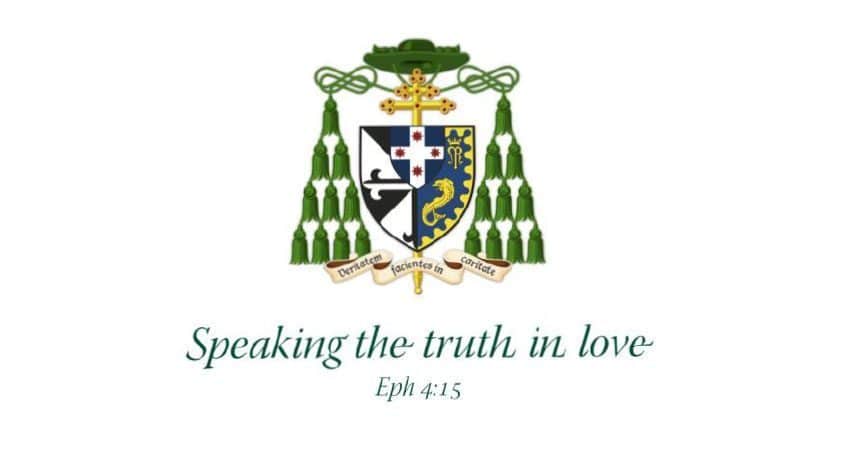Homily for Mass of the 32nd Sunday of Ordinary Time Year C + 40th Anniversary of the Chinese Catholic Community

Sydney St Kevin’s Catholic Church, Eastwood, 6 November 2022
In the 1992 film, Forever Young, Mel Gibson plays a US Air Corps pilot Daniel McCormick, who has himself cryogenically stored for a year to avoid witnessing the death of his comatose girlfriend Helen(played by Isabel Glasser). But something goes wrong and he wakes up fifty-three years later, and must navigate living in a different era in which his girlfriend Helen is still alive and McCormick himself is rapidly ageing. Forever Young is one of many films that play on the emerging technology of cryonics. These suggest that freezing will be used in the future to keep people in suspended animation for extended periods of interstellar travel, or as incapacitating punishment of criminals, or so they might be kept just barely alive but not ageing while they await a cure for their sickness. Alternatively, people might be frozen as they die in the hope that some future generation will choose to thaw and resuscitate them and fix whatever killed them.
Trying to out-pace death in this way is not a dream of for sci-fi enthusiasts. Tens of thousands of embryonic human beings are already kept in suspended animation in reproductive technology labs around the world. And there are currently more than 500 adults frozen in cryopreservation facilities hoping to be revived once scientists have unlocked the secret to immortality.[1] Later this year, Southern Cryonics will become Australia’s first cryogenic facility with 32 people already onboard to use their service once operational; it will house up to forty frozen bodies to begin with, for up to 500 years into the future, at a cost of $150,000 per person .[2]
While much of this may be a pipe dream, there is no doubt that medical science is increasingly extending life-spans with sophisticated pharmacology, organ transplants, gene therapy and the like. People also use such technologies to keep young or at least young-looking: the anti-ageing industry is projected to soon be worth $120 billion per annum! Finding a fountain of youth is an ancient fantasy found in Herodutus in the 5th century BC, in the medieval romance of Prester John, in the voyage to Florida of Juan Ponce de León, in Goethe’s Faust and Oscar Wilde’s Picture of Dorian Gray. Some have even been willing to sell their souls for it! In the meantime it’s vitamins and diets, gym and cosmetic surgery for those who want to look teenaged forever.
Whether fantasy or genuine science, immortality and eternal have so far proven elusive: ageing and death are inescapable features of the human condition. And so the big question becomes: what comes next? Ancient religions sought to please the gods of the underworld—Yan Wang or Lord Yama, Osiris, Hades or Pluto, and the Grim Reaper—in the hope of striking some kind of deal. Even in our scientific age most people say they believe in an afterlife of some sort[3] and, if all the ghosts and ghoulies floating around Halloween are anything to go by, their numbers are only growing.
In today’s readings it is clear that our Judeo-Christian forebears were also confident that there is an afterlife, even if they were vague about what it was like. The Maccabean martyrs (2Macc 7:1-2,9-14) suffered bravely, convinced that God world would raise them up. St Paul spoke of his “inexhaustible comfort and sure hope” in the resurrection (cf. 2Tim 2:16-3:5). And while Jesus resisted the morbid curiosity and disingenuous questions of the Pharisees and Sadducees, He was clear that the dead rise again incorruptible (Lk 20:27,34-38). Today He points out that if they really believe theirs is the God of Abraham, Isaac, and Jacob (Gen 50:24; Ex 3:15; Acts 7:32 etc.), and they also believe that theirs is the God not of the dead like Hades but of the living (Ex 3:6), then those long dead patriarchs and the Maccabean brothers must somehow be alive. Jesus promises, in fact, a glorified new life and forever.[4]
Since those heroic Maccabean boys, the Church has witnessed countless examples of the heroic faith even in the face of torture and death. In October 2000 Pope John Paul II canonized a group of 119 Chinese Martyrs who had been killed during the Boxer Rebellion. In his homily the Holy Father spoke of their joy at being able to offer the gift of their life back to God and to witness to their unfailing faith in Christ and His Church.[5] Among them was Francisco Fernández de Capillas OP (1607-48), a 17th-century Spanish Dominican missionary to the Philippines and China. He successfully built up the Catholic Church and the Third Order Lay Dominicans in Fu’an (Fogan). But the Manchurian conquest of the Ming dynasty led to a wave of persecution of Christians. Francis was arrested, accused of espionage and witchcraft, tortured and humiliated, and finally beheaded; he is known as the protomartyr of China. A century later, Pedro Sanz OP (1680-1747), the Dominican bishop of Fujian, suffered a similar fate to Francis Capillas but said at his execution, “Rejoice with me, my friend; I am going to heaven!” Four Dominican priests—Francisco Serrano OP, Joachim Royo OP, Juan Alcober OP, and Francisco Diaz OP—were arrested with him and executed later. The viceroy of Peking wrote about them:
What are we to do with these men? Their lives are certainly irreproachable; even in prison they convert men to their opinions, and their doctrines so seize upon the heart that their disciples fear neither torments nor captivity. They themselves are joyous in their chains. The jailors and their families become their disciples, and those condemned to death embrace their religion. To prolong this state is only to give them the opportunity of increasing the number of Christians.
Periodic persecution of Christians has continued in China ever since. In 1900, for instance, the 14-year-old Anna Wang was martyred for refusing to recant her faith; she boldly recited the name of Jesus and claimed “the door of heaven is open” moments before being killed.
It can be difficult for us to imagine both the suffering and the courage of these Christian heroes or indeed of those who still suffer today for the faith whether in China or elsewhere. Some of those who fled communism or migrated to Sydney for other reasons forty years ago were appointed by my predecessor, Cardinal Freeman, to work out of St Joseph’s Camperdown offering spiritual and pastoral support to those newly arrived from China. Upon those foundations a burgeoning community was built, with centres across Sydney helping thousands of Chinese-Australian Catholics connect with their faith through various ministries. Even as they made a new home in Sydney, they maintained the hope and prayer that China would one day be free and the Catholic faith thrive in that land!
The courage and hope that animates a total commitment to God’s promises can only come from God Himself, as St Paul reminds us in the epistle. And so, following his advice, we pray that God continually gives us all we need to continue the journey to the everlasting life: a life that isn’t a mere continuation of the here and now, like cryopreservation or some font of eternal youth, but something so much better, something beyond our imagining, what no eye has seen, nor ear heard, nor heart of man conceived (1Cor 2:9). Happy 40th birthday Chinese Catholic Community. Ad multos annos!
Address at Lunch Celebration
40th Anniversary of Chinese Catholic Community in Sydney
It’s from the ancient Chinese philosopher, Lao Tzu (b.571 BC), that we get the proverb: A journey of a thousand miles begins with a single step. The power of the saying comes from the way it frames the relationship of the small to the large, from the seemingly inconsequential to the profound. We are captivated by stories of growth, of how tiny things can flourish into something of great magnitude and immensity: hence the gospel allusion to the mustard seed becoming a great bush.
The truth is: as human beings we can’t always see the bigger picture but as Christians we are called to trust in God and order our hearts towards Him and His goodness. Then immensely great things can be achieved. Jesus assures us that what is impossible for men is possible for God (Lk 18:27) and St Paul reminds us that for those who love God all things work for the good (Rom 8:28).
It was love of God and love of neighbour that motivated a small group of lay Catholics originally from Hong Kong to take that single step 40 years ago and set up an association for Chinese Catholic immigrants. There was no way for them to know that from a single centre in Camperdown they would multiply to ten sites around Sydney; that the handful of Chinese Catholics would turn into thousands and become the biggest ethnic group entering the Catholic Church in Australia each Easter; that 1500 Baptisms would spring from their community so far; and that their ministries would include RCIA, youth groups, Sunday school, Bible classes, spiritual retreats, Eucharistic adoration with benediction of the Blessed Sacrament, various social events, in including, of course, lunch gatherings after Mass with line dancing and more.
What they did know was if they placed their trust in God and had faith in Him, then like the Chinese Church after the death of the martyrs, they would be blessed, and their community would flourish. Today we celebrate the fruits of God’s blessing on this thriving community and honour those first faithful men and women. May it continue to grow and spiritually nourish all our faithful Chinese Catholic brothers and sisters here in Sydney. God bless you all!
[1] https://www.discovermagazine.com/technology/will-cryonically-frozen-bodies-ever-be-brought-back-to-life
[2] https://www.nytimes.com/2021/06/26/style/cryonics-freezing-bodies.html#:~:text=More%20than%2050%20years%20after,people%20aged%202%20to%20101.
[3] https://www.newscientist.com/article/mg24432570-500-why-almost-everyone-believes-in-an-afterlife-even-atheists/; https://www.ipsos.com/en-us/news-polls/ipsos-global-dvisory-supreme-beings-afterlife-and-evolution; https://www.nbcnews.com/better/wellness/fewer-americans-believe-god-yet-they-still-believe-afterlife-n542966
[4] e.g. Mt 7:13-14; 25:46; Lk 23:43; Jn 3:16,36; 4:14; 5:24,28-29; 6:27,40,47,50-71; 10:10,27-28; 11:25-26; 17:3; 1Jn 2:17,25; 5:13; Rom 5:21; 6:4.
[5] https://www.vatican.va/content/john-paul-ii/en/homilies/2000/documents/hf_jp-ii_hom_20001001_canonization.html, 2.
Introduction to Solemn Mass of the 32nd Sunday of Ordinary Time Year C + 40th Anniversary of the Chinese Catholic Community in Sydney, St Kevin’s Catholic Church, Eastwood, 6 November 2022
Welcome to St Kevin’s Eastwood for our Mass for the 32nd Sunday in Ordinary Time. Today we celebrate the 40th Anniversary of the Chinese Catholic Community in Sydney. I acknowledge concelebrating with me the parish pastor Fr Pawel Kopczynski CSMA; Fathers Gerard Kelly, Michael Goonan SSP, Nestor Candado SSP, Thomas Alackakkunnel and Jose Jojo Eloja, with Deacons Eddie Ho and Raymond Hung assisting.
I welcome today officials of the Chinese Catholic Community including Wai Pon, Gloria Cheung, Barry Wong and others; representatives of the Equestrian Order of the Holy Sepulchre of Jerusalem; Sr. Teresia Seeto RSJ and the Sisters of St. Joseph; and Sr. Damian Lai and the Sisters of St. Paul de Chartres.; and above all, all of you, the faithful of the Chinese Catholic Community here in Sydney: a very warm welcome to you all!

